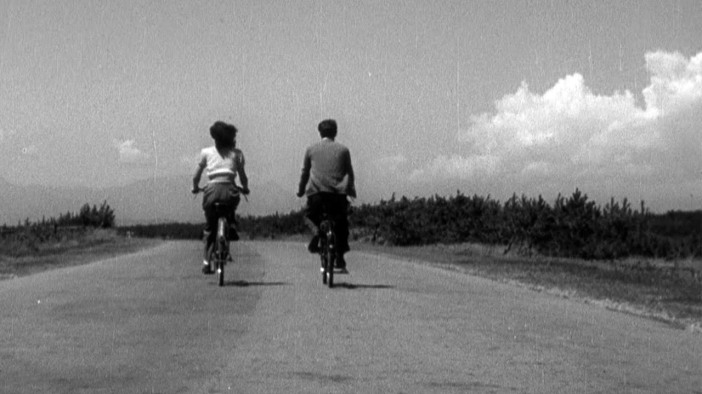
(Dir. Yasujiro Ozu, Japan, 1949)
Just the Way It Is
Noriko Somiya is getting older. Older, yes, but not in the sense that most of us today might consider “getting old.” Noriko (Setsuko Hara) is twenty-seven, and her marital status has become the primary concern of her widower of a father (Chishu Ryu) and meddling aunt (Haruko Sugimura) who worry that her age may increasingly be a hindrance in securing her a husband. Her aunt has even taken it upon herself to find her niece a proper suitor. To complicate matters, however, the affable and mild-mannered Noriko does not share her elders’ fears for she has no desire to marry at all. Driven to defending herself against her insistent aunt and unhelpful friend Aya (Yumeji Tsukioka) – who’s already been married and divorced herself – Noriko becomes indignant as she finds her future being arranged without her consent. This is the primary narrative of Yasujiro Ozu’s subtle masterpiece Late Spring.
The Japanese master may be only rivaled by Satyajit Ray or Abbas Kiarostami for his ability to craft meaningful, even revelatory cinema without the flashiness of highly stylistic flourishes indicative of popular art film. Late Spring, then, is a crucial work in Ozu’s oeuvre as it established his signature minimalist aesthetic and familial narrative concerns of his postwar films, largely considered his finest period of filmmaking. The low-angled, lengthy takes composed almost exclusively of static shots and the soft, gentle editing technique of interposing shots over each other during transitions became mainstays of Ozu’s style after Late Spring. And, more than just trademarks of an impressive director, these choices perfectly serve this homebound work that draws us into the intimate exchanges of its characters through the film’s steady pace and intentional lack of filmmaking showmanship. Tokyo Story in 1953 would solidify Ozu’s status as master of heart-wrenching familial drama, but its predecessor Late Spring nearly matches his arguable opus in its challenging of traditional societal norms in the touching portrait of a father-daughter relationship.
Before Sugimara’s Aunt Masa enters the narrative as the antagonistic force of custom and traditionalism, Shukichi and Noriko are happy as a pair of father and daughter coping with the distant death of their wife and mother in postwar Japan rebuilding itself. Shukichi continues his work as a university professor, Noriko fulfills the duties of maintaining their home, and both of them serve as the other’s companion. The only roadblock standing in the way of their continued happiness is what others perceive as improper. Noriko, at twenty-seven years old, should be married, and Shukichi is not yet old enough to rule out getting remarried. The father falls victim to this way of thinking first, and follows his sister’s lead in urging his daughter to choose a spouse, and soon. Noriko resists the pair’s matchmaking efforts until her father surprises her with the news that he will soon likely remarry – a match also instigated by Aunt Masa. Over the course of the film, Noriko experiences waves of various emotions, at once attempting to express her own desire to remain single and care for her aging father while trying to reconcile this desire with a society that opposes it.
Ultimately, it seems her love for her father and perhaps an acceptance of defeat in the face of an unrelenting cultural norm, Noriko consents and agrees to marry the man her aunt has proposed as a suitable future husband. Cleverly, Ozu never shows her fiancé onscreen, leaving us with the only story that matters at its center. Noriko and Shukichi may both go on to marry – something Ozu hints that neither really wants to do – but the most important relationship of Late Spring is the strong bond between father and daughter. The film’s finale, then, is bittersweet, if not altogether tragic. Noriko stands in front of a mirror dressed in an elaborate wedding dress with her father and aunt gushing over her beauty, and the young woman forces a smile. Will she find happiness in marriage just as she found it as a single woman living with her father? This is beyond the scope of Ozu’s film, but the fact that the choice remains outside of Noriko’s control is telling of where the filmmaker stands on the idea of unquestioned tradition.
In this way, Late Spring is more pertinent than ever. The rights of women the world over have come along way since 1949, and yet the persistent assumptions many still hold with regards to women and their decision to remain single reveal that Ozu’s film was way ahead of its time. And yet, as each of Ozu’s powerful films has done, it rises above playing out as simply a message film by virtue of the importance the director places on character and story. Ozu’s cinema is a cinema of people – people with real issues and emotions – and Late Spring stands as one of the finest life-like portraits of a family in his impressive body of work.

One thought on “Late Spring”